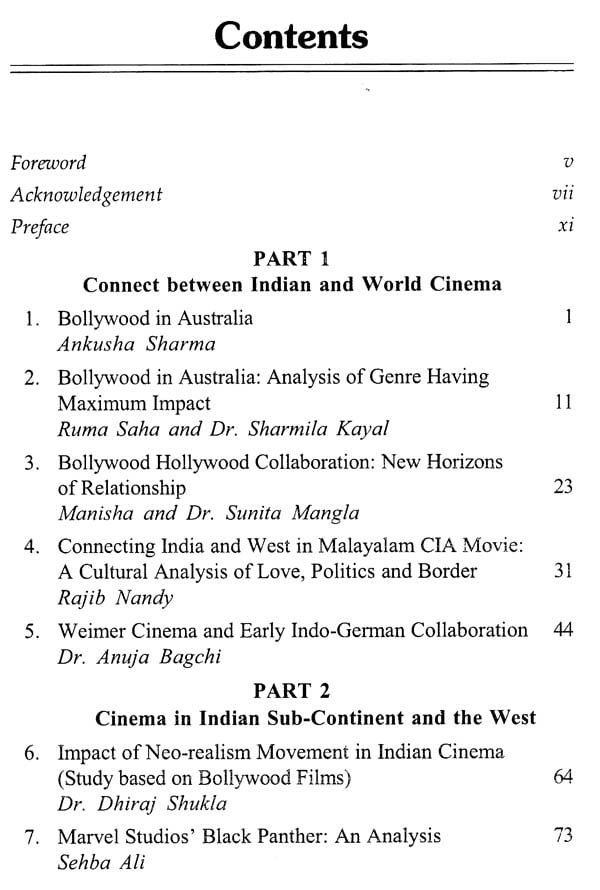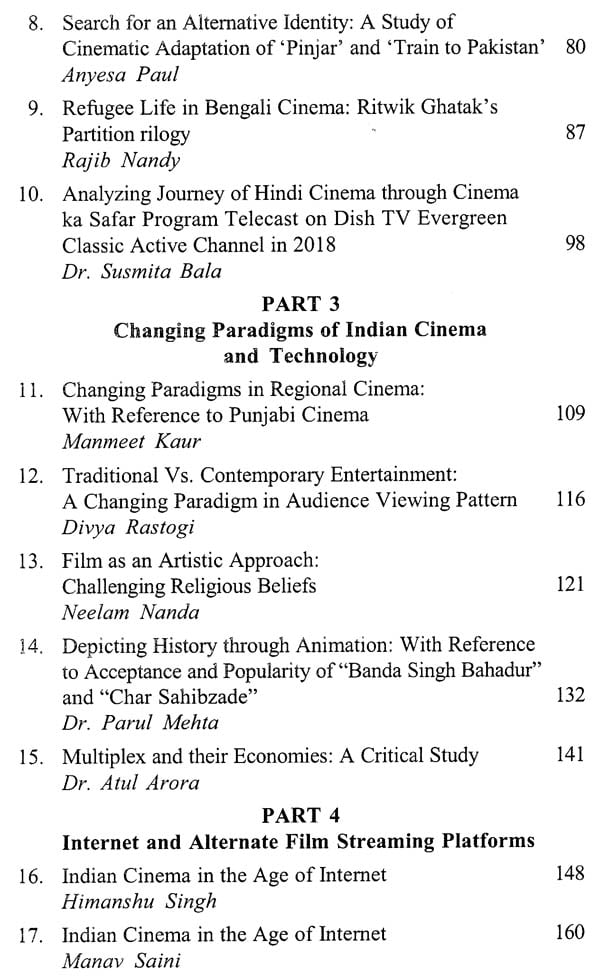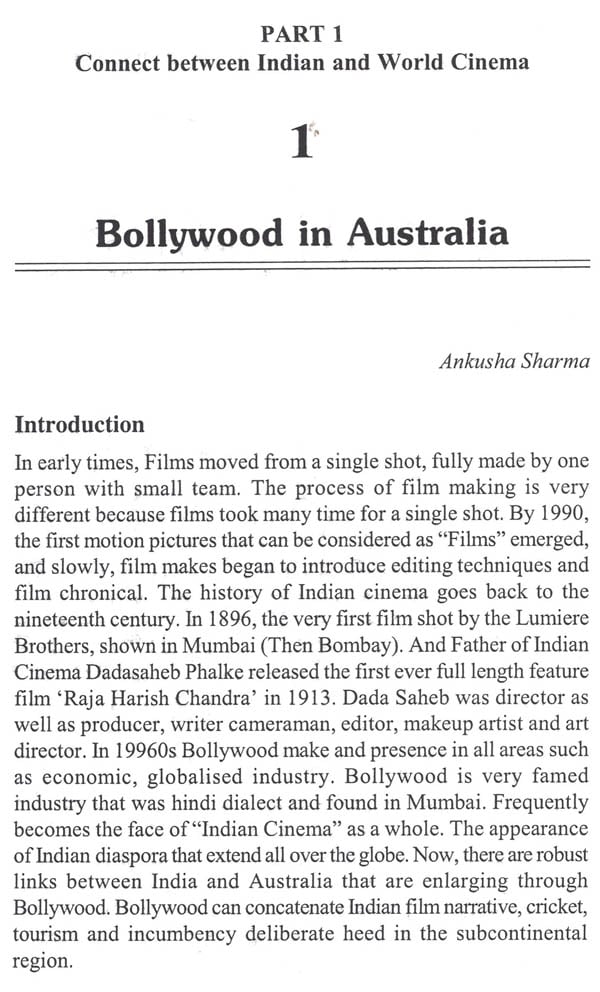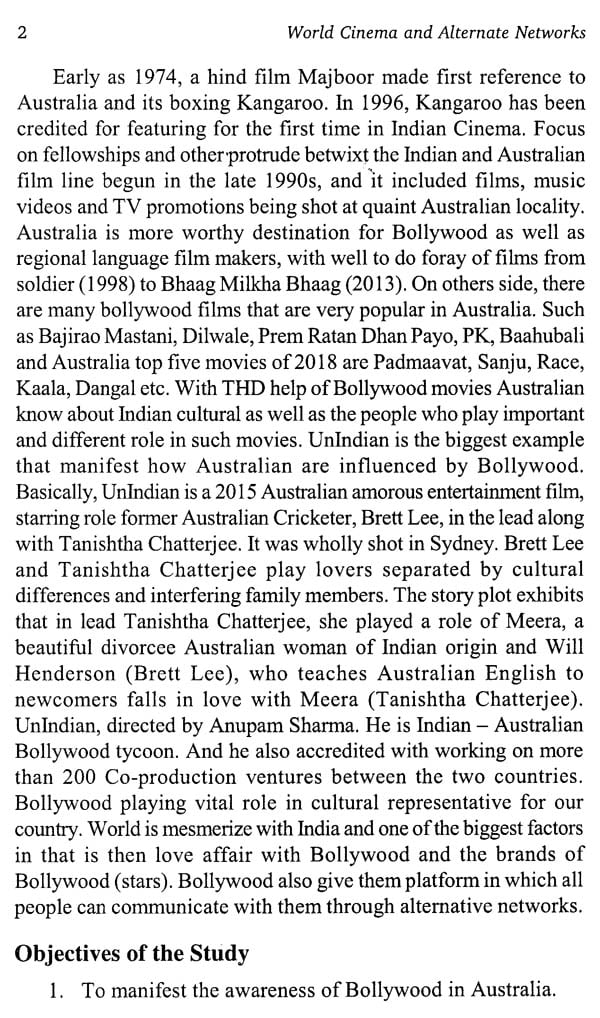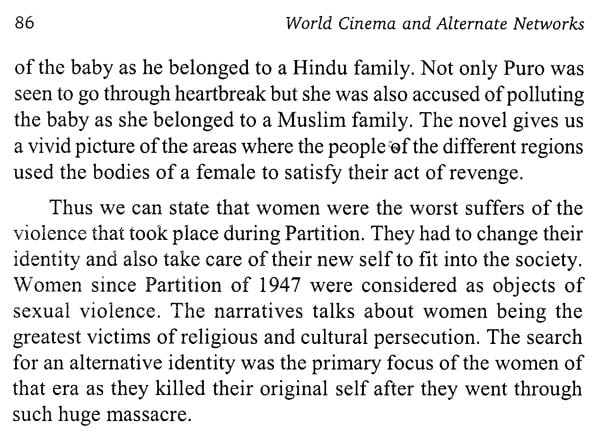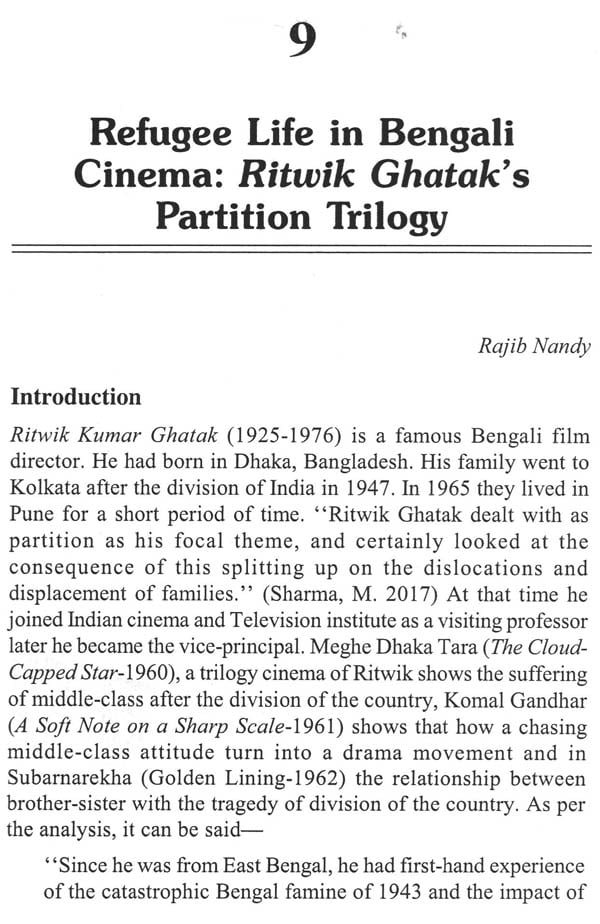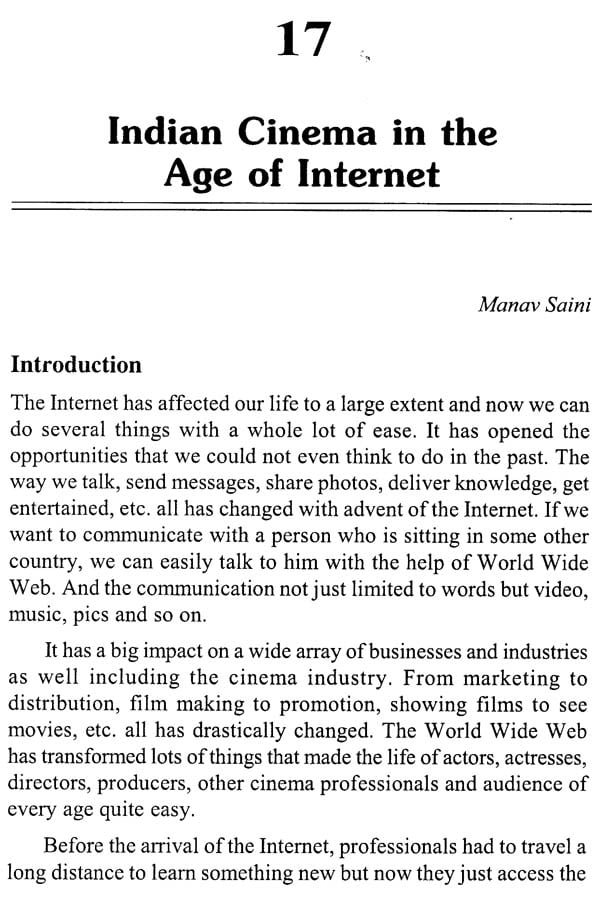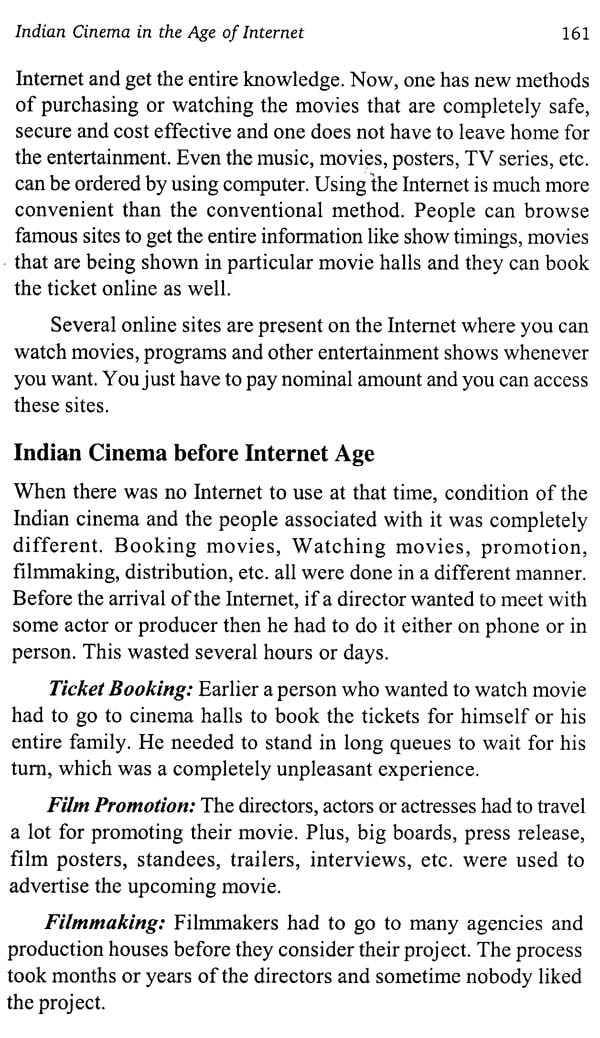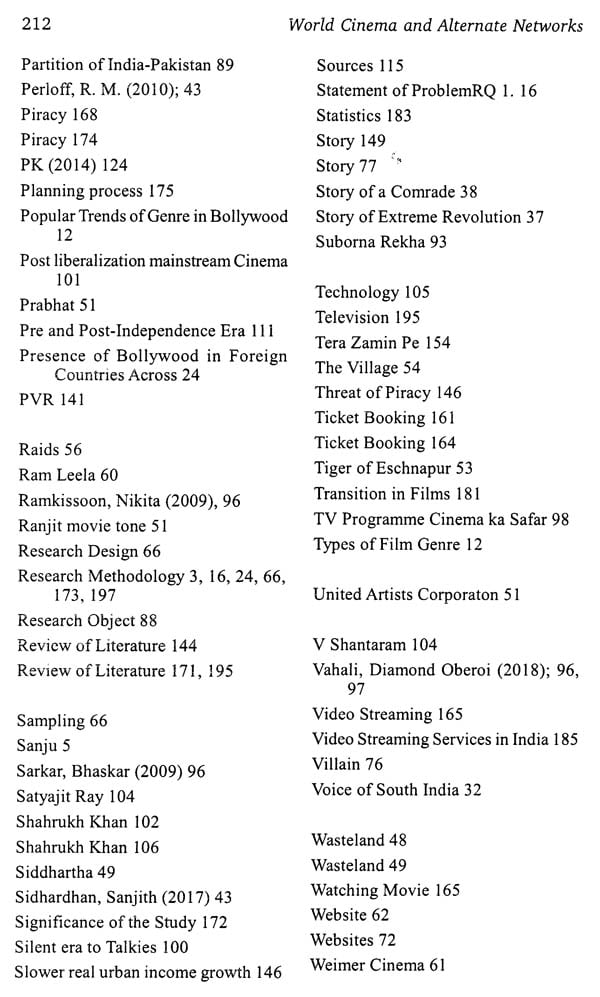
World Cinema and Alternate Networks
Book Specification
| Item Code: | NAV871 |
| Author: | Ambrish Saxena |
| Language: | English |
| Edition: | 2019 |
| ISBN: | 9788184570755 |
| Pages: | 216 (13 B/W Illustrations) |
| Cover: | HARDCOVER |
| Other Details | 9.00 X 6.00 inch |
| Weight | 390 gm |
Book Description
Indian cinema has been rich in many respect whether it is the distinct style of storytelling or captivating mythological themes. Films in India have always been magnificent in craft though technological advancement is seen lagging sometime. Comparing Indian cinema with world cinema from Hollywood to Europe and from Japan to Iran, we never feel disheartened.
However, we have to accept that Indian cinema has learned a lot from the West be it theories of filmmaking or innovative practices. The influence of western neo-realism on Indian films can, be cited as an example. Many scholars in this book have tried to re-enforce this connect. The content ‘of this book comprises Bollywood-Hollywood collaboration and Indo-German collaboration.
Over the years Indian cinema has penetrated ‘deep into overseas markets. This penetration is across continents from America to Europe and from Asia to Pacific. Indian films are being screened in theatres of foreign land and their viewership is not confined to Indians living there In this book, few authors have written about this phenomena, particularly in reference to the presence of Bollywood in Australia.
Cinema as a medium can never be limited to boundaries. For understanding Indian cinema, we not only need to go to pre-partition era but we also need to analyse the impact of partition on the films of India, Pakistan and Bangladesh. Not only the sufferings of the people of these countries are common, but the quest for identity is also common. This book has given space to films revolving on such issues.
Many authors have talked about the changing paradigms of Indian cinema and the influence of technology on films. Technology has impacted every aspect of filmmaking be it theme, narrative, post-production effects or distribution. Many articles talk about the influence of internet on filmmaking and distribution and alternate film streaming networks.
This book is broadly divided in four segments.
Part 1: Connect between Indian and World Cinema
Part 2: Cinema in Indian Sub-Continent and the West
Part 3: Changing Paradigms of Indian Cinema and Technology
Part 4: Internet and Alternate Film Streaming Platforms
Dr. Ambrish Saxena is Dean, DME Media School and Director, DME Studios and Production. He is an accomplished media professional, educator, trainer, researcher, author, anchor and political analyst. He has worked at different media platforms ranging from theatre, puppetry, print, radio, television to films, before switching over to media academics.
Dr. Saxena has worked with many media . groups, The Pioneer, Amrit Bazar Patrika, Aaj, JVG Times and ZEE. He has worked for the first ever TV news magazine Parakh during 1990s. He has been anchoring the highly rated programme of AIR FM Gold Market Mantra since the inception of the channel in 2001.
Dr. Saxena has academic association with more than 20 universities of India which include 4 central, 5 state and 9 private/deemed universities. He has 27 books to his credit as sole author, main author, chapter writer and editor. He has a long list of research papers presented in national (17) and international (26) seminars/conferences.
Dr. Saxena was part of the Indian Educators’ delegation to China in 2008, participated in International Conference at RMIT University, Melbourne, Australia in 2016 and presented papers at Pre-Conference in Portland and ‘Conference in Eugene, Oregon, United SEAR organized by IAMCR in 2018.
Cinema and television have long held mainstream entertainment appeal. From a mass media perspective, the content in movies or cinema can be classified vis-a-vis the status of society. There have been those that, upon release, mirror the life and times of the audience. Also present have been both regressive and progressive productions. There are in fact considerable themes into which productions can be categorised and various lenses through which they can be understood.
India produces numerous films in many languages every year. There is also endless hours of television programming churned out, day in and day out. Indian films have been widely recognised as a tool for soft power diplomacy too. Their reach and appeal have transcended borders and left a indelible impression on even India’s fiercest foes. From my travels across South-East Asia I have also seen firsthand how Indian soap operas have a loyal and dedicated audiences well beyond India’s borders. Add to this the heady mix of new networks that have aggregated content and are aiso producing Indian originals—Netflix, Amazon Prime Video, AltBalaji etc., and the playing field has just expanded exponentially.
Given the scale and reach of Indian cinema and the nuances of the developing TV and networks platform, a study of the journey, direction and impact of these is very much in order. In fact the lack of periodic and systematic analysis of what we are watching, is simply astounding. This series of four books tries to fill this gap, and is a first in what should be a regular inquiry into the state of Indian productions.
These books contain research articles that analyse the various facets and developments in this field, and were presented at DME’s second international ICAN—Indian Cinema & Alternate Networks Conference. The Conference, partnered by Deakin University, Australia, and inaugurated at the India Habitat Centre on 16% November 2018, received exceptional support and contributions.
It 1s indeed heartening that we are sharing the spirit of inquiry and awareness with leading academicians of Australia, which is emerging as one of India’s more prominent foreign connection.
An enormous amount of hard work has gone into organising of the conference as well as release of these books, and the ably led DME Media School must be congratulated on this feat.
Tam hopeful that these papers contribute positively to the study of an industry that, while understandably acknowledged as a commercial giant, is often intellectually ignored.
Cinema makes a lasting effect on viewers’ mind. It not only entertains but enlightens too. It is the real documentation of the culture, history, heritage and societal issues in a country. Cinema fascinates, it is alluring and captivating, and that 1s how it draws crowd to theatres all across the globe.
For the creative people cinema is a craft and not an academic subject. Learning the craft may be easy with an ingenious approach and skill friendly attitude. But, academics has its own importance. It gives a depth, an understanding to the producer of cinematic content. Educational institutions perform this job either through prescribing the subject in curriculum or organizing film appreciation workshops.
Besides academic and creative aspect, film making also involves technology and marketing. The arrival of OTT signals the departure of satellite age and internet based promotional tools have changed the dynamics of business. There 1s an earnest need to appreciate and comprehend these changes in whichever capacity we are associated with cinema whether as producer of content or merely consuming the content as viewer.
ICAN? held on November 16, 17 and 18, 2018, at DME provided a platform for all those who love cinema and want to live with cinema. Technical sessions (8), plenary sessions (3) and workshops (3) during International Conference on Indian Cinema and Alternate Networks delivered ample opportunities to film academia and film makers.
This conference looked at various aspects of Indian cinema while looking into how its reception and consumption, collaboration and distribution have changed over the years. Various aspects of Indian cinema were researched, analysed and discussed by scholars and filmmakers in different sessions of the conference.
ICAN? provided ocean of knowledge in terms of research based writings by eminent and emerging scholars from India and abroad. The research papers presented in this international conference are being published in the form of four books, three in English and one in Hindi. This book World Cinema and Alternate Networks is one of these books. The other two books are titled "Bollywood Women and Indian Society" and "Changing Trends of Indian Cinema".
This book World Cinema and Alternate Networks establishes connect between world cinema and Indian cinema. It talks about influence of the West on India incorporating trends of neo-realism and system of studio based filmmaking. It brings before you diverse thoughts and approaches with regard to theory and practice of filmmaking with focus on India and Indian sub-content including both Bangladesh and Pakistan.
This book discusses changing paradigms of Indian cinema and the impact of changing technology. It delves into the most pertinent aspect of satellite versus web, the influence of internet on filmmaking and distribution and alternate film streaming networks. Many eminent media scholars, researchers and film experts have contributed to this book by penning down the outcome of their research and analysis on different themes. Hope, this book will benefit the cine lovers.
**Contents and Sample Pages**
